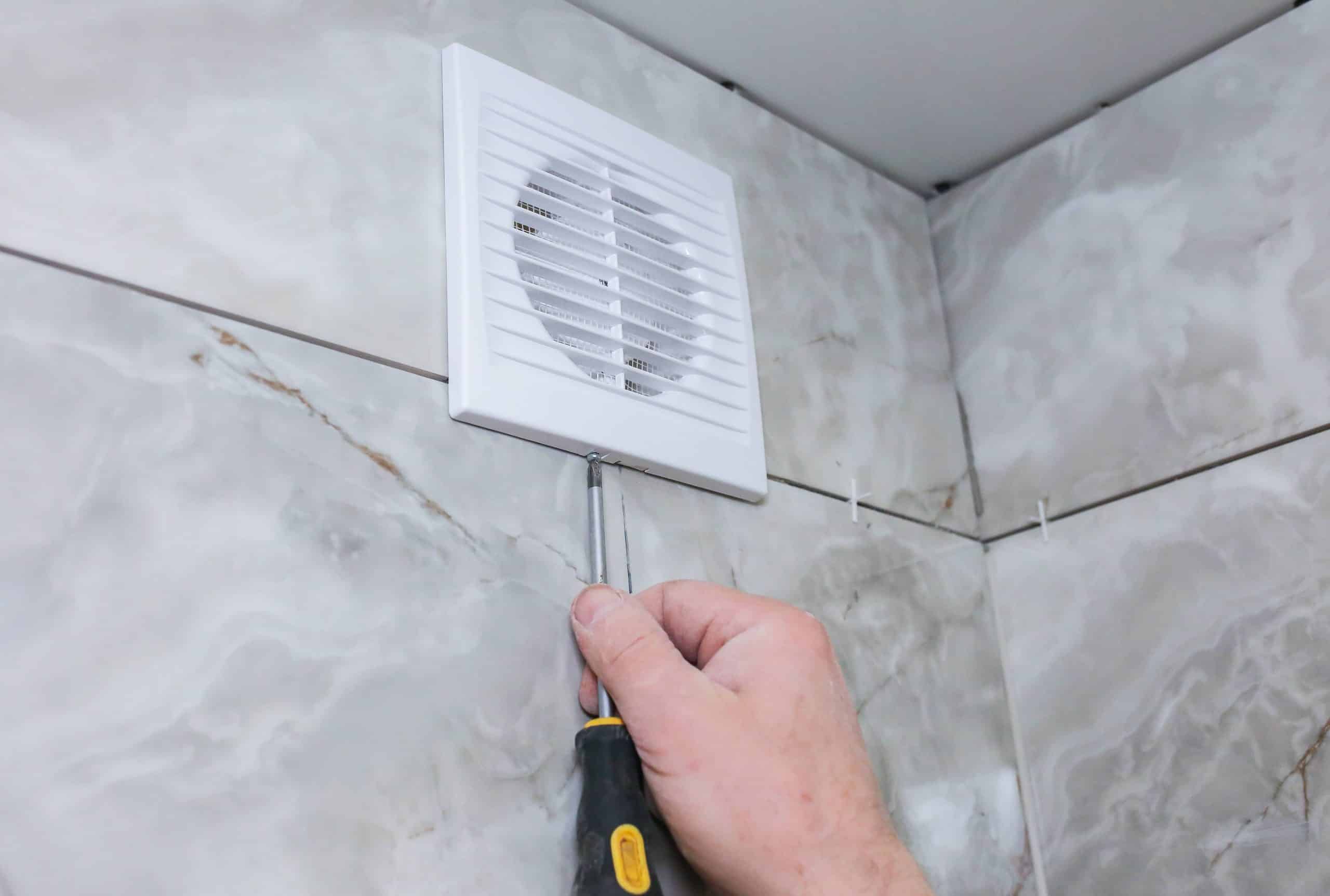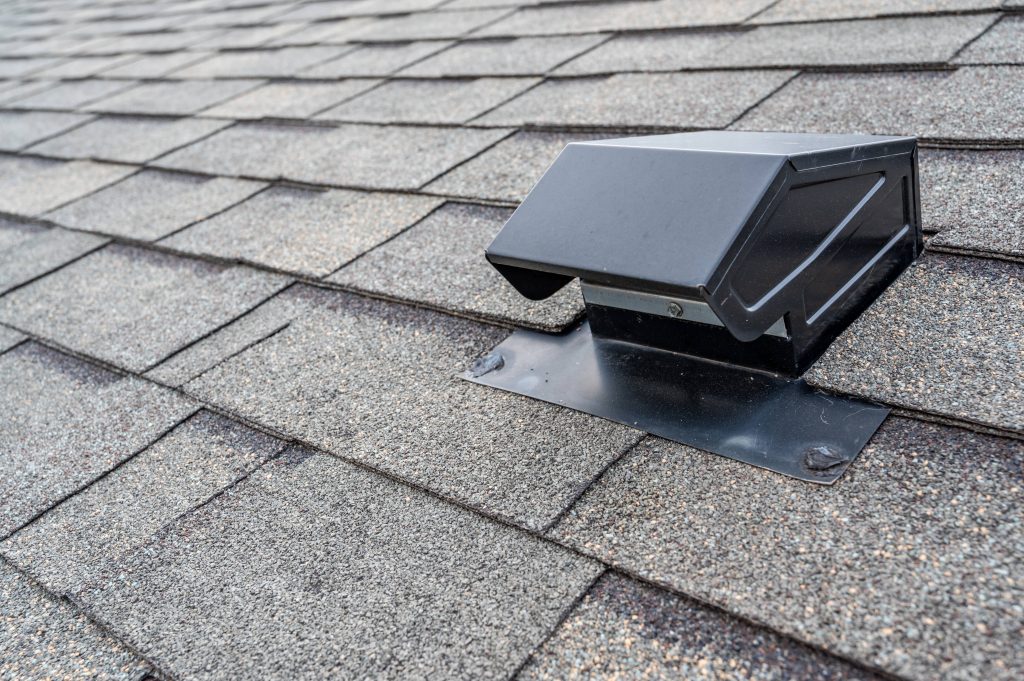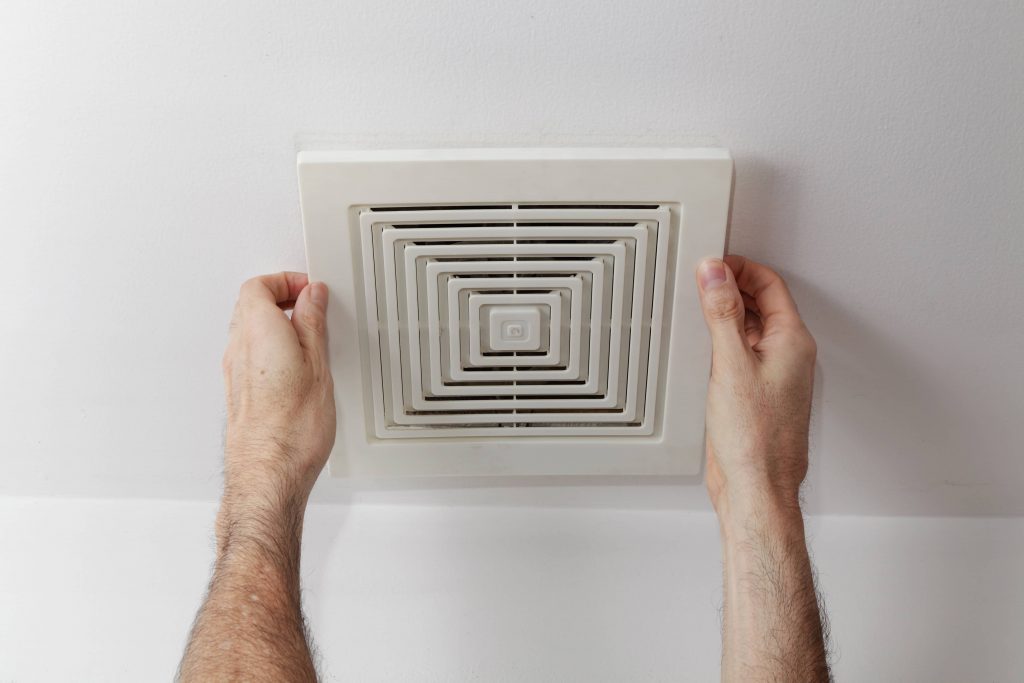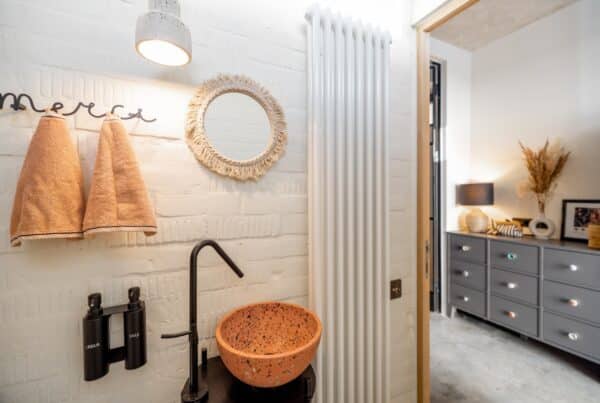
Whether you are buying a new home or building one, it is important to know where to vent your bathroom exhaust fan. Can you vent a bathroom fan into the attic? Yes, but you should never vent your bathroom exhaust fan into the attic. There are a few reasons and concerns for this.
Let’s take a look below at the reasons why you do not want to vent the bathroom exhaust fan into your attic.
Ventilation Concerns
If the bathroom exhaust fan vents into the attic you risk the possibility of creating a mold and mildew breeding ground. In addition, the air and moisture pulled from your shower or bathroom will release into the attic and condensation will occur.
If condensation occurs mold and mildew are likely to follow.
However, some contractors will argue that if you live in a humid environment like Florida, this may not be a concern because there is already moisture in the air. In addition, they would prefer to discharge it in the attic or at an attic vent since creating another hole in the roof for the bathroom vent increases chance of leaks.
While this is still up for debate, we encourage homeowners to follow local building codes as to if they should discharge bathroom vents through the roof.

Vent Through the Roof
Having an attic space to move around is a luxury for most homes. The space allows the homeowner to access various points of the home that are otherwise not accessible from inside the home. Making sure that your bathroom exhaust fans are vented through the roof and not just into the attic is important.
Materials Needed to Re-route the Exhaust Fan
Let’s take a look at what tools and materials you will need to re-route or connect your bathroom exhaust fan to the roof vent. Remember, the goal is to keep it from venting directly into the attic:
- Caulk gun-this holds the caulk tube and seals off the new opening space in the roof or side of the home.
- Corded drill-allows you to have enough power to drill the screws to secure the roof vent.
- Hammer-nailing in the shingles after you have installed a new roof vent.
- Jigsaw-cutting out the opening in the roof to connect the insulated duct work to the roof vent.
- Pry bar-lifting the shingles up without damaging them.
- 4-in. rigid or flexible duct with insulation-needed to connect the bathroom exhaust vent fan with the roof vent.
- Asphalt roof cement-this reseals the shingles and the roof vent.
- Roof-mounted exhaust vent-the actual vent to connect to the insulated duct work.
- Roofing nails-needed to reconnect the shingles.
How To Complete The Install
If you are the adventurous type and believe that you can vent your bathroom exhaust fan through your roof to ensure that the moisture is not going into your attic, then here are the steps that you will need to take to accomplish this task.
- Cut the space that is 4-inches round in your roof and install the roof vent.
- Apply the asphalt and roof cement to seal the new roof vent.
- Now go into your attic space. Here you will connect your 4-inch rigid or flexible duct with insulation from your new roof vent to your bathroom exhaust fan.
Believe it or not, it is a very simple process. However, calling a professionally licensed roofing contractor to ensure that you are following all Texas building codes is necessary.

How Much Will This Cost
Like anything else in home maintenance and repairs, the cost of installing a new bathroom exhaust fan or completing the ventilation process can vary. The average cost for completing this project is $250 to $700. Also, for those DIYers that would like to attempt this project yourself, the average cost for the fan and materials themselves is $175 to $350.
Other Recommended Maintenance
It is recommended that you seal your attic properly. Also, this ensures that sealing your attic space saves money on energy bills. Small openings around light fixtures, HVAC units, electrical boxes, and plumbing pipes are all items needing sealing in an attic. Lastly, due to insulation, it is difficult to find these small openings, so take your time.
While you are in your attic making sure that all is sealed up, you will want to consider cleaning the attic crawl space. If for some reason you do have a venting into your attic, mold and mildew will begin to grow under the changing climate conditions.
Before getting onto the roof you should also consider learning about roof jacks. This will save you time and money when installing a new roof vent for your bathroom exhaust fan. Hiring a professionally licensed roofing contractor is the best approach in this situation.

When Should I Call A Professional
Before changing your bathroom exhaust fan or installing a new one, you should know if an exhaust vent is in place. It is not a good idea to vent your bathroom exhaust fan into the attic so calling on a professionally licensed roofing contractor is important for this project.
There are building codes that need to be followed to ensure a successful bathroom exhaust fan is vented properly. In addition, you will want to hire a licensed electrician to confirm your wiring setup is safe for the bathroom exhaust fan.
Conclusion
When completing any roofing updates or upgrades, you must consult various professionally licensed roofing contractors. You will first want to call on a few professionally licensed roofing contractors to get quotes on the installation of a roof vent. While you are doing that, you will also want to call on All Coast Home Inspections for a roof inspection in Houston, TX.
They will be able to conduct a roof inspection to determine what you will need to install a roof vent for your bathroom exhaust fan system.



